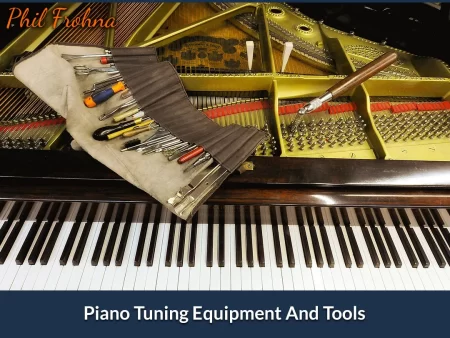 The art of piano tuning is a delicate blend of precision, artistry, and science. Every piano, from the elegant grand pianos adorning concert halls to the cherished uprights in family living rooms, deserves the utmost care in tuning to preserve its tonal beauty and ensure longevity. At the core of this meticulous process is an array of specialized tools and equipment. In this article, we delve into the essentials of piano tuning equipment and how they are used to bring pianos to perfect pitch every time.
The art of piano tuning is a delicate blend of precision, artistry, and science. Every piano, from the elegant grand pianos adorning concert halls to the cherished uprights in family living rooms, deserves the utmost care in tuning to preserve its tonal beauty and ensure longevity. At the core of this meticulous process is an array of specialized tools and equipment. In this article, we delve into the essentials of piano tuning equipment and how they are used to bring pianos to perfect pitch every time.
1. Tuning Lever (or Hammer):
This is the primary tool in any tuner’s kit. Resembling a long-handled socket wrench, the tuning lever allows technicians to adjust the piano’s tuning pins, which in turn changes the tension of the strings and alters the pitch. The lever’s length provides the necessary leverage to turn the pin, while its specialized tip ensures a snug fit to prevent any damage.
2. Mutes:
Tuning a piano is all about isolating individual strings to ensure they produce the desired tone. Mutes, made of rubber or felt, are wedged between strings to silence them temporarily. This helps the technician to hear and adjust one string at a time, even in chords where multiple strings produce a single note.
3. Electronic Tuning Device (ETD):
In today’s digital age, many technicians use ETDs to provide a precise pitch reference. While the human ear remains invaluable in the tuning process, ETDs can offer quick and accurate readings, especially in challenging environments or during initial rough tunings.
4. Temperament Strip:
This long, narrow piece of felt is used to mute all the outside strings in one section of the piano, enabling the tuner to work on the central strings without interference. Once the middle strings are tuned, the temperament strip is removed to tune the remaining strings to match.
5. Aural Tuning Forks:
Before the advent of digital tools, tuning forks were the go-to reference for pitch. Many technicians still prefer them, especially for aural (by ear) tuning. When struck, the fork vibrates at a specific frequency, providing a reference note for tuning.
6. Piano Tuning Software:
Modern piano technicians might use specialized software in conjunction with microphones to analyze the piano’s sound spectrum. This technology can assist in fine-tuning, particularly in pianos with complex tonal characteristics.
7. Inspection Mirrors and Lights:
Given the piano’s intricate interior, having a good line of sight is crucial. Small mirrors mounted on handles and specialized lighting tools help technicians inspect hard-to-see areas inside the instrument.
Every piano is unique, with its own character and history. Using these essential tools, skilled technicians like those at TampaPianoTuning.com ensure that each instrument sings in perfect harmony, providing joy and inspiration to listeners.
A Symphony of Perfection with Phil Frohna Piano Tuning
If your piano needs the precise touch of expert hands and the precision of top-tier tuning tools, look no further than Phil Frohna Piano Tuning. Serving Tampa, FL, and its environs, our team is dedicated to the art and science of bringing every piano to its optimal sound. Whether you’re preparing for a grand concert or seeking soothing melodies at home, trust us to strike the right chord.
Picture Credit: Pixabay